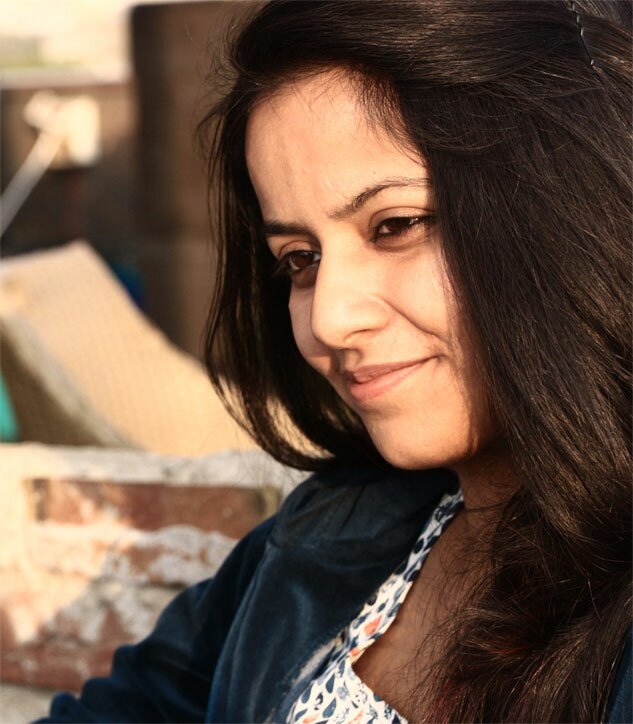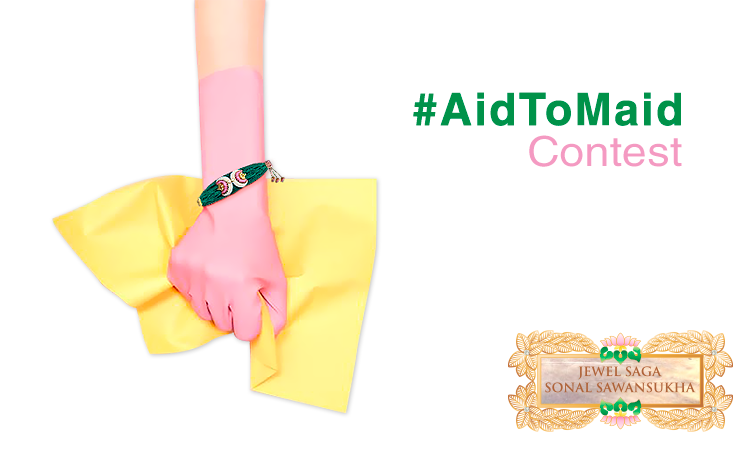JWB’s Tryst With Travel Writer Dharmendar Kanwar Was Beyond Beautiful!
- JWB Post
- July 8, 2016
I sat there sifting through the pages of my diary to find the one where I had scribbled notes for my conversation with her.
Little did I know, that just about an hour later, I’d be clasping the very same diary, struck with the realization that the grey-haired woman sitting in front of me is the personification of what I wish to be, 50 years down the line – drenched in the serenity of reading and writing, surrounded by self-authored books.
Bearing that thought in mind, I took Dharmendar Kanwar’s leave, yesterday. But, what did I bear in mind when I set out to interview this travel writer of majestic repute, you ask? Find out below in the excerpts from my conversation with her.
Of course, I asked the customary ‘Tell me about yourself’ question.
“Ever since I was in the final years of school, I knew I would do something in the field of writing,” she smiled and said.
“Why did you pick travel, particularly, as a genre?” I let loose the inquisitive side of my brain.
Dharmendar: Because the idea of introducing a place to people fascinates me. Narrating the details of an area, describing its nooks and corners, is a very pleasing task.
Me: When exactly did you begin your career?
Dharmendar: It was in the year 1979 or 1980. My father was in the army, and after he was posted in Shillong, we left Jaipur and moved to the North East. Some years down the line we relocated back to Jaipur, which is when I got involved full-fledgedly in tourism and travel writing.
Me: Whoa! The fact that you’ve been working for more than three and a half decades somehow slightly intimidates me right now. Tell me about the kind of difficulties you faced back in those times?
Dharmendar: I come from an orthodox Rajput family. Back then, my mother wasn’t very comfortable with the idea of me going to places alone. So, a younger cousin of mine accompanied me whenever I travelled. And it was fair enough. She wanted to ensure my safety; I wanted to do my work. The deal satisfied both the purposes.
In fact, when I used to go out for travelling and inspecting areas, I always tried not to attract attention. I dressed like a tomboy and quietly did my work midst troop of people.
Me: From the little research that I did before I came here, I found out that all your work is extensively of and about Rajasthan. Why such geographical restriction, may I ask?
Dharmendar: I do travel on and off beyond Rajasthan, but when I do, I travel as a tourist. I don’t pay deliberate attention to every minuscule detail as I do when travelling Rajasthan.
Me: What is it about this state that has cast such a spell on you?
Dharmendar: Ah! There are just so many things! It is difficult to name a few. Most of all, I believe it is the landscape and the people here. People in Rajasthan are very cordial, warm, and helpful, as compared to people in other places.
Me: Is this devoted passion for Rajasthan also the reason behind your association with INTACH (Indian National Trust for Art & Cultural Heritage)?
Dharmendar: Back in the time when I became a part of INTACH, there was hardly any hullabaloo about heritage conservation. There weren’t any specialized conservation architects back then, and the approach towards maintaining monuments and the walled city wasn’t proactive. For instance, instead of chuna surkhi, cement was used for restoration purposes simply because it was cheaper and less time-consuming than the former.
Now, being a travel writer, I didn’t know much about all this and other conservation related things. I learnt everything on the job and gradually it grew on me. Ever since, we’ve been battling to preserve the monuments, the walled city, and the whole of ancient architecture – all of which can never be duplicated.
After all, one shouldn’t destroy what one cannot recreate. Don’t you think so?
Me: Absolutely! Tell me a little about the first project that you undertook as a member of INTACH.
Dharmendar: My first project was a small pillar in Amber Fort. We had been asking the Director of Archaeology to grant us the permission of restoring the fort, but due to little confidence in us and fear of losing his job, he couldn’t do much. Nevertheless, we insisted him to let us work on a tiny area and see the results for himself. Hence, the small pillar.
In the ensuing years, not only did we restore the fort, but also other important places such as Maharani Ki Chhatri, Kesar Kyari, etc.
Me: Which, according to you, is the most underrated monument in Rajasthan?
Dharmendar: All of them are underrated!
She spoke with sincere conviction.
Dharmendar: … In the olden days, there were these open verandahs sort of community spaces outside and between every house where people used to gather and chat over tea on a regular basis. These spaces have disappeared over time and so have the conversations and interactions. These, for me, are underrated!
Me: I have grown up oblivious to the existence of such spaces. Now that makes my heart sink a bit. And now I kind of get why you are so infatuated with Rajasthan.
Dharmendar: The true spirit of the state and its beauty resides in the walled city, in the by lanes, in the random murals on these lanes. One has to get on foot to discover this hidden splendor. My book titled Jaipur Ten Easy Walks is all about discerning this true essence. It also accounts for the most adventurous experience in my writing career.
Me: Speaking of your books, tell me about the one that was difficult to write?
Dharmendar: Writing the book on Rambagh Palace was an uphill task. It should have been the easiest, though, but due to the absolute absence of records and information that were dumped into a dry well in Raj Mahal, I had to recreate stories from people who lived in those days.
Me: And the book that you were nervous to write?
Dharmendar: The two biographies I wrote on Rajmata Gayatri Devi. Back then, a family pride series was being created wherein any of the family members of Rajmata was required to write a biography of her. Rajmata asked me to do so. I felt honored, but at the same time nervous.
Me: From the little homework that I have done on you, I know one thing for utter certainty. Rajmata Gayatri Devi was someone very dear to you. Tell me more about your bond with her.
Dharmendar: To say that she was a special person to me would be an understatement. The awe and respect that I have for her is difficult to put into words. I consider myself fortunate to have seen a side of hers that wasn’t visible to others.
As students, whenever we heard of Rajmata coming to MGD, we used to look for reasons to stay out of the class just so that we could catch a glimpse of her. Her beauty, her style, and her grace were unmatched!
Her face lit up like a Christmas tree while she spoke about Rajmata. I paid attention to her words, but more so to her animated expressions.
Dharmendar: …Years later, I received a letter of appreciation from Rajmata. It turns out; she had seen some of the restorative work I had done as a part of INTACH and was very proud of me. She even accompanied me to some of the sites we had been working on. Gradually, these interactions culminated into a beautiful bond.
We travelled together; we even worked on two cookbooks. That’s ironic because both of us are non-cooks. She also took me to Pakistan once.
When I was working on the Last Queen of Jaipur, Rajmata saab wasn’t doing so well. She was keen on seeing the book, but the publishers were taking way too long to process and print the book. I wrote to them, requested a soft copy, got prints out of the same, and presented to Rajmata. I still remember the serene look on her face after she had read the book. She was happy.
I hated to break her chain of thoughts, but one question urged me to do so.
Me: What is the most prized value that you have learnt from Rajmata Gayatri Devi?
She escaped into what seemed like a brief moment of introspection before she answered.
Dharmendar: She gave time to people. She wasn’t fussy at all. I’ll tell you an incident. Once, Rajmata and I were visiting a small house in Kooch Bihar. Now, the house was barely the size of a room; there was hardly any decent place to sit. At this sight, I was all finicky thinking how could Rajmata come to such a place. Do you want to know how she reacted?
Me: I’m all ears!
Dharmendar: She went and sat, meanwhile conversing with the people, trying to put them at ease. She ate whatever they served. She treated them with so much respect. That’s when I learnt the most important lesson – the lesson of humility.
Care for a piece of trivia? Dharmendar Kanwar was once awarded ‘The Best Travel Writer’ by Rajasthan Govt. But that doesn’t come close at all to her most prized achievement. She had restored a heritage site called ‘Maharani ki Chhatri’- a place where all the maharanis of the city have been cremated. Pre-restoration, the place was in a very bad shape. Seeing the beautiful post-restoration state of the place, Rajmata came to Dharmendar and said, “This is the place I would like to be brought to after I die.”
This encounter till today stands as the most emotional moment in Dharmendar’s life.
Me: Given a chance to travel anywhere in the world, which place would you pick?
Dharmendar: I have seen all that I wanted to see. Yet, given a chance, I would love to get lost in the labyrinth in the interiors of Rajasthan. I would like to discover and experience their beauty, once again.
Me: Midst your impressive travelogues, must be a certain favorite incident, a story, a memory, a place? Would you like to share?
The thought that her mind must be a huge library of memories and in the brief interstice, she must be choosing which one to pick, got me all the more interested.
Dharmendar: Several years ago, I travelled to a village in Jaisalmer. It almost felt like I was visiting some acquaintance of mine owing to the warmth with which people welcomed me. A woman in the household took me to the kitchen and merrily chatted with me about her family, her life while kneading the dough. There were no questions whatsoever asked about where I was from and why I had come.
I stayed in Jaisalmer for a few days doing absolutely nothing other than staring at the sand dunes. But you know what? All that time, I was so much at peace with myself.
Me: Shall we declare it your ‘happy place’ then?
Dharmendar: *Smiles* If you say so.
Just as I was about to greet her and take my leave, she asked me a few questions about my work. I smiled and replied, “I tell stories.”
Dharmendar: Had I not been a travel writer, I would have been writing about people and their stories. You know how people often crib about waiting for 2-3 hours at the airport/station? I enjoy that sort of time. I like to sit and observe the passersby from a distance. I make my own version of stories about them.
Without telling her that I kinda do the same at airports, I took my leave, letting the beautiful conversation that I had just been privy to, soak in.
Picture Courtesy:
- 0
- 0







